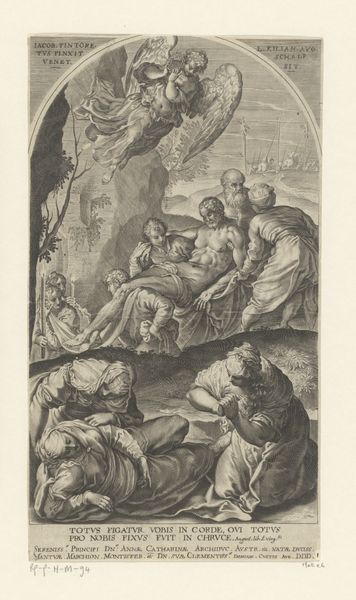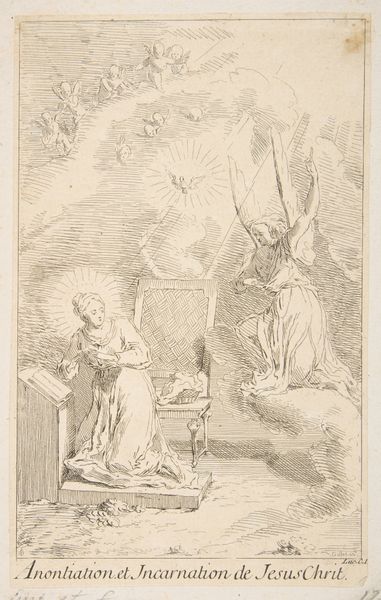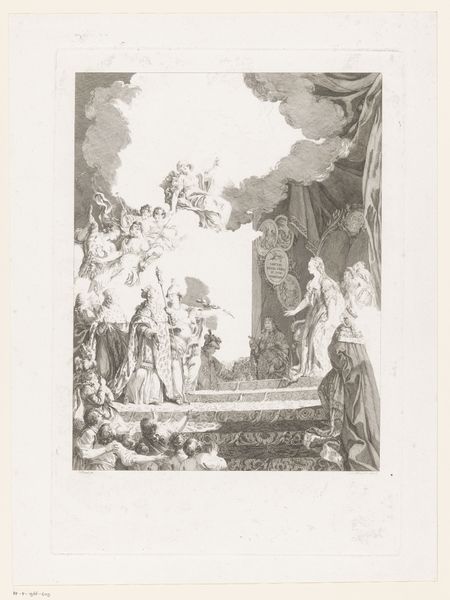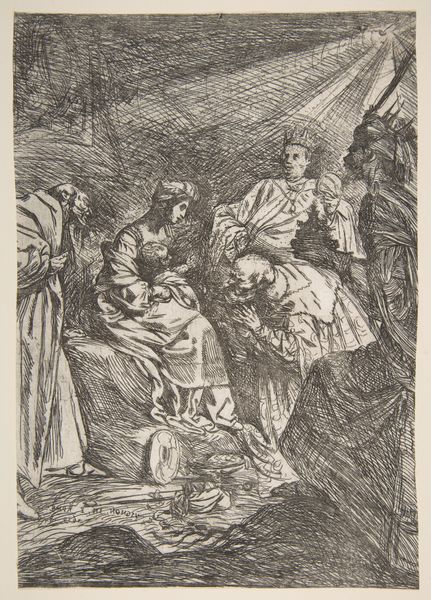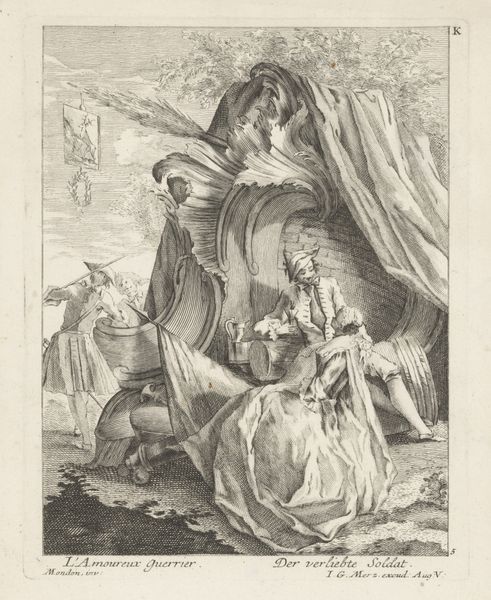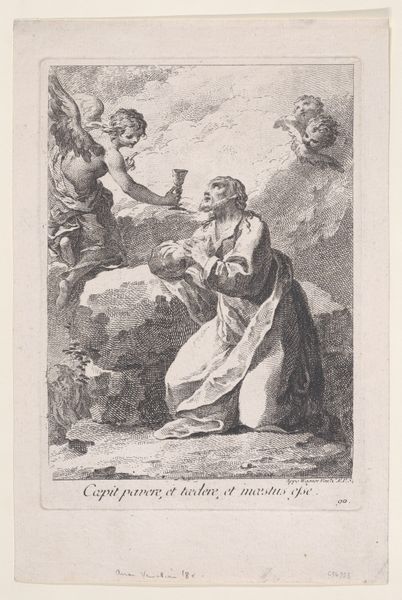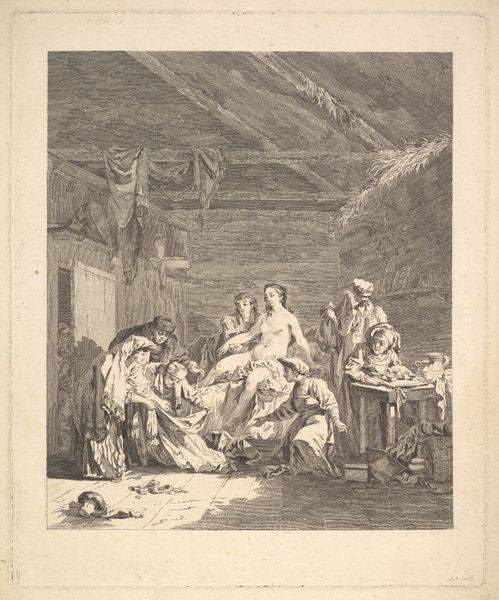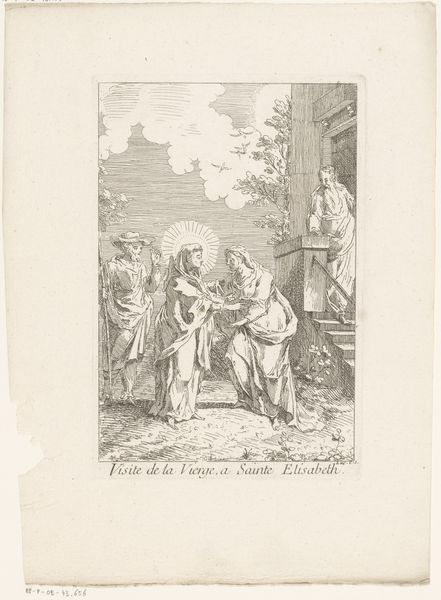
print, etching
#
baroque
# print
#
etching
#
figuration
#
history-painting
Dimensions: height 138 mm, width 80 mm
Copyright: Rijks Museum: Open Domain
Editor: Here we have Paul Troger's "Presentation in the Temple," an etching from the early to mid-18th century, housed at the Rijksmuseum. There's such dramatic intensity in the scene, amplified by the stark contrast of the etching. It’s quite captivating. How do you interpret this work in its historical and social context? Curator: Considering Troger's work within the framework of 18th-century power structures allows us to engage in a dialogue between art history and contemporary critical theory. Notice the visual hierarchy: a robed priest towering above a kneeling woman presenting her child, mirroring existing social inequalities. How do you think representations like this solidified those structures, and what are its impacts on modern gender dynamics? Editor: So, the art normalizes patriarchal power… making those power imbalances appear as divine order rather than a social construct. It reinforces specific ideas about gender roles, particularly the woman's subservience within religious and societal frameworks. I suppose you can't really remove art from culture. Curator: Precisely. Also note how history-painting reinforces specific political and ideological agendas. Art doesn't exist in a vacuum; it either subtly challenges or actively reinforces specific positions of power, in society. Consider, how did these images serve the interests of the Church, for example? How was religion mobilized to further oppress certain groups, while valorizing others? Editor: So the image served as a tool for social messaging… I’m starting to think about how this imagery might continue to influence subconscious gender biases today. Curator: Indeed. By critically analyzing artworks like these, we unveil the narratives they propagate, understanding the intersectional forces shaping social discourse and hopefully leading towards more equitable and representative visual narratives in contemporary art. Editor: This piece and our conversation highlight the importance of examining art through the lens of power dynamics, influencing both historical and contemporary societal issues. I will remember to be aware of that in other pieces as well.
Comments
No comments
Be the first to comment and join the conversation on the ultimate creative platform.

